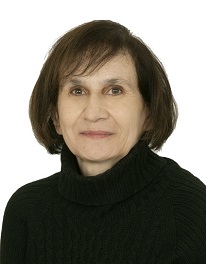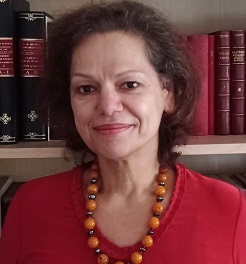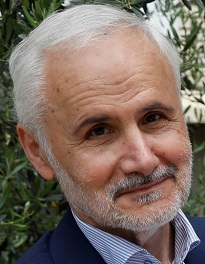
Anna Iordanidou
University of Patras
|
Το γλωσσικό μάθημα στο ελληνικό σχολείο: Διδακτικές προσεγγίσεις και διδακτικές πρακτικές
Στην παρούσα ανακοίνωση επιχειρείται η επισκόπηση των διδακτικών προσεγγίσεων στο γλωσσικό μάθημα στο ελληνικό σχολείο, με εστίαση στις δύο τελευταίες δεκαετίες, και συγκεκριμένα από το 2006, έτος εισαγωγής νέων σχολικών εγχειριδίων που σηματοδοτούν τη μετάβαση από τη δομική στην κειμενοκεντρική προσέγγιση, μέχρι σήμερα, εν αναμονή της προκήρυξης νέων εγχειριδίων, με βάση τα Προγράμματα Σπουδών που αναρτήθηκαν το 2021. Σημαντικό σταθμό σ’ αυτή την πορεία αποτέλεσε το πρόγραμμα «Νέο Σχολείο» του 2011, με την πρόταση των διδακτικών σεναρίων, τα οποία, λόγω της οικονομικής κρίσης, εφαρμόστηκαν μόνο σε περιορισμένη κλίμακα σε πιλοτικά σχολεία. Δεδομένου ότι οι διδακτικές προσεγγίσεις των σχολικών βιβλίων δεν εγγυώνται την εφαρμογή τους στη σχολική πράξη, αναλύονται και σχολιάζονται τα ευρήματα ερευνών σχετικά με τις απόψεις, τις στάσεις και τις διδακτικές πρακτικές των εκπαιδευτικών. Από την ανάλυση προκύπτει ως γενικό συμπέρασμα ότι στο ελληνικό σχολείο επικρατούν σε σημαντικό βαθμό προ-κειμενοκεντρικές πρακτικές αποπλαισιωμένης παραγωγής λόγου και έμφασης στην αποκομμένη από το κείμενο διδασκαλία της γραμματικής, ενώ φαίνεται ότι είναι περιθωριακή η διαδικασία ανακαλυπτικής μάθησης στο γλωσσικό μάθημα. Ενόψει της προκήρυξης για την παραγωγή νέου διδακτικού υλικού στο γλωσσικό μάθημα, μέσω της ανάλυσης και του σχολιασμού εφαρμογών διδακτικών σεναρίων από εκπαιδευτικούς, επιχειρείται να αναδειχθεί η αναγκαιότητα της αλλαγής παιδαγωγικής στάσης προς την κατεύθυνση της αντικατάστασης των στατικών βιβλίων με το δυναμικό υλικό των διδακτικών σεναρίων με δημιουργική αξιοποίηση των τεχνολογιών πληροφορίας και επικοινωνίας.

Vasiliki (Kiki) Nikiforidou
National and Kapodistrian University of Athens
|
A constructional approach to grammatical multifunctionality Greek linguistics and the marker που (pu)
A well-studied topic in Greek grammar, Modern Greek που functions mainly (not only) as a relativizer (Είδα και τον Πρόεδρο που είχε ασπρίσει εντελώς), complementizer (Ξέχασες που πέσαμε πάνω τους κι έγινε χαμός;) and adverbial connective (Έκλαψε που την είδε). Each of these functions has given rise to important work, which can be roughly categorized into two distinct trends: studies that focus on one or the other of the syntactic functions, treating them as separate and unrelated, and studies that acknowledge the existence of a relationship even if the type of relationship proposed is (radically) different. Drawing on both synchronic variation and diachronic developments, I suggest that a constructional analysis of the main syntactic functions of που captures insights from both trends in the earlier literature. In particular, the possibility of linking meaning directly to syntactic form in terms of constructions (the basic premise of Construction Grammar) allows for determining formal and semantic/pragmatic features that are mutually dependent and crucial in connecting the various uses. By tolerating redundancy and recognizing frequency-based entrenchment, a constructional approach further allows for identifying privileged and prototypical instances of each use (e.g. θυμάμαι που in complementation) in terms of lexically-filled subpatterns of a schematic construction. The study of που offers, therefore, both familiar and new ground for addressing a challenging chapter in Greek linguistics and extending existing work in new directions.

Anthi Revithiadou
Aristotle University of Thessaloniki
|
Exploring central themes in Greek phonology through the lens of Optimality Theory and other constraint-based models
Around the time of the first ICGL, Malikouti–Drachman wrote two state-of-art-articles, one in 1994 and another in 2001, that critically reviewed significant issues related to Greek Phonology, with a particular focus on the lexical and post-lexical components of grammar. Building on this foundation, the present study aims to explore three central themes that have influenced phonological research on Greek in recent decades from the theoretical standpoint of Optimality Theory (Prince & Smolensky 1993; McCarthy & Prince 1995), a model that has revolutionized phonological analysis. These pivotal topics include: (a) investigating the phonological representation and morphophonological behavior of the palatal glide [j] in Greek and its dialects, as well as the influence of the learned/non-learned vocabulary distinction on its realization; (b) examining the acquisition of Greek phonology as both L1 and L2, and the role of the Lexicon in acquiring phonotactic systematicities; and (c) exploring the various types of prosodic constituents that exist at both the phonological word level and higher levels, along with the question of whether there are reliable diagnostic criteria in the form of sandhi rules for their identification. The investigation concludes by proposing future research directions that utilize the latest theoretical advancements in computational phonological modeling, such as Harmonic Grammars (e.g., Legendre et al. 1990; Smolensky & Legendre 2006) and Maximum Entropy Grammars (e.g., Goldwater & Johnson 2003; Hayes & Wilson 2008).
References
Goldwater, Sharon & Mark Johnson. 2003. Learning OT constraint rankings using a Maximum Entropy model. In Jennifer Spenader, Anders Eriksson & Östen Dahl (eds.), Proceedings of the Stockholm Workshop on Variation within Optimality Theory, 111–120. Stockholm: Stockholm University.
Hayes, Bruce & Colin Wilson. 2008. A Maximum Entropy model of phonotactics and phonotactic Learning. Linguistic Inquiry 39(3). 379–440. https://doi.org/10.1162/ling.2008.39.3.379.
Legendre, Geraldine, Yoshiro Miyata & Paul Smolensky. 1990. Harmonic Grammar – A formal multi-level connectionist theory of linguistic well-formedness: Theoretical foundations. In Proceedings of the Twelfth Annual Conference of the Cognitive Science Society, 388–395. Mahwah, NJ: Lawrence Erlbaum Associates.
McCarthy, John J. & Alan Prince. 1995. Faithfulness and reduplicative Identity. In Jill N. Beckman, Laura Walsh & Suzanne Urbanczyk (eds.), University of Massachusetts Occasional Papers in Linguistics 18: Papers in Optimality Theory, 249–384. Amherst, MA: GLSA Publications.
Prince, Alan S. & Paul Smolensky. 1993. Optimality Theory: Constraint interaction in Generative Grammar. Rutgers University & The Johns Hopkins University [RuCCS-TR-2; CU-CS-696-93].
Smolensky, Paul & Géraldine Legendre. 2006. The Harmonic Mind: From Neural Computation to Optimality-Theoretic Grammar, vol. I: Cognitive Architecture. Cambridge, MA: MIT Press.

Anna Roussou
University of Patras
|
(Re)current themes in Greek syntax
The present talk splits into two parts. The first part is an overview of what has been achieved in the study of Greek syntax within the framework of Generative Grammar so far. This concerns the variety of syntactic phenomena, the emphasis on morphosyntax given that Greek is an inflectional language, the variation attested, as well as the contribution the study of Greek has had in comparative syntax. The phenomena of word order, null subjects, subjunctive particles (vs infinitives), relativization and complementation, as well as properties of the nominal system are some of the main topics that have been discussed in the literature. This discussion is not meant as a ‘state-of-the-art’ presentation, but more as an attempt to show what has been achieved so far, bearing also in mind the contribution of Irene Philippaki-Warburton towards that direction.
In the second part I will focus on some open issues that remain at the forefront of current research, such as control and raising, which present a challenge for minimalist approaches. They represent a good case where null subjects, lack of infinitives, subjunctive particles, and case interact; at the same time, they are phenomena that have been well-discussed with respect to Greek, contributing to a better understanding of the data, while offering a variety of analyses. I will also outline some less well-studied aspects of clause structure with special reference to the left periphery in relation to discourse properties, again bearing in mind that various modal particles, including the subjunctive one, are arguably part of the left periphery.

Ianthi Maria Tsimpli
University of Cambridge
|
Greek as a first or second language: insights from and contributions to linguistic theory
Greek linguistics has been fortunate enough to include a large number of studies on the acquisition of Greek as a first or a second language in children and adults. As a first language, Greek has been studied in monolingual and bilingual children (also referred to as heritage language speakers). As a second language, Greek has been studied mostly in children or adults who have immigrated to Greece at different points in their lifespan. As with all languages, the study of their developmental trajectory is highly informative of the domains of the language that are more or less delayed and more or less open to individual differences. More interestingly, the comparison of these trajectories across languages can contribute in highly informative ways to our understanding of the basic principles of language development and by extension, to the psychological and biological grounds of formal linguistic theory. Reviewing some of the findings of Greek L1 and L2 acquisition studies, I will focus on how they have helped us grasp our understanding of Language.

Giannis Veloudis
Aristotle University of Thessaloniki
|
Άρνηση και συναίσθημα
Η μελέτη της άρνησης κατά την προηγούμενη πεντηκονταετία έχει αναδείξει, και σκοντάψει σε, μια σειρά διαγλωσσικά φαινόμενα που έχουν εξάψει το ενδιαφέρον των γλωσσολόγων. Ανάμεσά τους: η λεγόμενη “ανύψωση” του αρνητικού (neg raising), η αινιγματική ασυμμετρία none και *nall (: σε καμιά από τις γλώσσες του κόσμου δεν απαντά ανάλογη μονολεκτική εκφοράˑ Horn 2012), τα αμφιλεγόμενα ΄Στοιχεία Αρνητικής Πολικότητας’ (Negative Polarity Items), η συγχρονική ενίσχυση των αρνητικών εκφωνημάτων μέσω εμφατικών μηχανισμών (: minimizers, generalizers, maximizers), και η διαχρονική ανανέωση των αρνητικών μορίων (Meillet’s ‘spiral’, Jespersen’s cycle). Η σχετική βιβλιογραφία, συντακτική, σημασιολογική, πραγματολογική, είναι τεράστια. Τη διατρέχει όμως, παρά το πλάτος της, και ένα πάγιο χαρακτηριστικό: αγνοεί συστηματικά το συναίσθημα, και τη συνακόλουθη εκφραστικότητα, του ομιλούντος υποκειμένου. (Κι αυτό είναι περίεργο, αν αναλογιστούμε πόσες φορές χρειάζεται να αρνηθούμε κάτι με έμφαση, κάποτε και με όλη τη δύναμη της ψυχής μας.)
Σε σειρά εργασιών από τα μέσα της προηγούμενης δεκαετίας (Veloudis 2017, 2018, 2019, 2022) έχω υποστηρίξει ότι το εκφραστικό υποκείμενο βρίσκεται πίσω από, και συνδέει μεταξύ τους, τα παραπάνω φαινόμενα. Και ότι είναι απαραίτητο να το φέρουμε στο προσκήνιο, στον βαθμό, τουλάχιστο, που δεν μας αρκεί μια απλή –και όχι πάντα ανέφελη– περιγραφή, αλλά ζητούμε μια βαθύτερη εξήγηση για το φαινόμενο της άρνησης. Ναι, η μοίρα των αρνητικών μορίων είναι πράγματι να ανανεώνονται διαγλωσσικά και διαχρονικά, και μάλιστα η ανανέωσή τους να κόβεται και να ράβεται πάνω στο ίδιο πατρόν. Αλλά γιατί να συμβαίνει κάτι τέτοιο; Και γιατί αυτό το πατρόν να το υιοθετούν και μη συγγενικές μεταξύ τους γλώσσες; Αυτή η κανονικότητα σημαίνει προφανώς κάτι για το φαινόμενο της άρνησης καθαυτό, αλλά τι; Ναι, Στοιχεία Αρνητικής Πολικότητας, π.χ. τα εμφατικά ΚΑΝ, κανΕΝΑΣ, ΤΙποτε, ΠΟΤΕ, κτλ. της Νέας Ελληνικής, νομιμοποιούνται αποκλειστικά σε αρνητικά περιβάλλοντα. Μας αρκεί όμως αυτή η διαπίστωση; Γιατί αυτός ο περιορισμός; Και γιατί μόνο τα μη εμφατικά δίδυμα κανένας, τίποτε, ποτέ, κτλ., της ίδιας σειράς να μπορούν να απαντούν και σε άλλα τροπικά περιβάλλοντα; Τι σημαίνουν όλα αυτά για το φαινόμενο που μας ενδιαφέρει;
Είναι λάθος να αντιμετωπίζουμε το ομιλούν υποκείμενο σαν χρήστη απλώς της άρνησης, και να το παρακάμπτουμε. Το συναισθηματικό-εκφραστικό υποκείμενο, πιο συγκεκριμένα, ζητάει πάνω απ’ όλα να βιώσει την άρνηση μαζί με το ακροατήριό του, εμπλέκοντάς το. Σε πρόσφατη μελέτη (Veloudis 2022) υπέθεσα ότι την πεμπτουσία αυτής της βίωσης πρέπει να την αναζητήσουμε στη φυσική, μη διδασκόμενη, ενστικτώδη έννοια της ‘κλιμάκωσης’ (scalarity): στο πάνω ή στο κάτω, μέχρι και την έσχατη τιμή, στο πλαίσιο μιας λανθάνουσας ολότητας. Στην σημερινή ομιλία θα επανέλθω συμπληρωματικά σε αυτό το θέμα της λανθάνουσας ολότητας. Θα υποστηρίξω ότι το προγλωσσικό, εικονιστικό σχήμα (image schema) ΠΕΡΙΕΧΟΝ παρέχει το πεδίο για τη βίωση της άρνησης. Ειδικότερα, μάλιστα: η αμφίδρομη σχέση ΠΕΡΙΕΧΟΝΤΟΣ-ΠΕΡΙΕΧΟΜΕΝΟΥ. Μια σχέση με εντυπωσιακές μη γλωσσικές καταβολές που φτάνουν, και θα τις ακολουθήσουμε, μέχρι τα λεγόμενα ‘αρνητικά χέρια’ των προϊστορικών σπηλαίων, δεκάδες χιλιάδες χρόνια πριν. Το συναισθηματικό-εκφραστικό υποκείμενο, θα ισχυριστώ, ζυμώνει διαγλωσσικά αλλά και διαχρονικά την άρνηση με βασικό συστατικό τη σχέση ΠΕΡΙΕΧΟΝΤΟΣ-ΠΕΡΙΕΧΟΜΕΝΟΥ και μαγιά την υπερβολή. Που έρχεται να φουσκώσει τη ζύμη, έχοντας επίσης βαθιές καταβολές, μέχρι και πέρα από το ανθρώπινο είδος.
Εν ολίγοις, τι είναι αυτό που ενδιάθετα “γνωρίζουν” για την άρνηση τα συναισθηματικά υποκείμενα και υποστηρίζει διαχρονικά και διαγλωσσικά την ομοιόμορφη εκφραστική της ανανέωση; Ποιες είναι οι βαθύτερες, μη γλωσσικές καταβολές αυτής της “γνώσης”; Σε αυτά τα ερωτήματα θα ζητήσω να επικεντρωθούμε, με την ελπίδα ότι η αναλογική πραγμάτευσή τους θα φωτίσει πληρέστερα το φαινόμενο ‘γλωσσική άρνηση’.
Αναφορές
Horn, L. R. 2012. Histoire d’*O: Lexical Pragmatics and the Geometry of Opposition. Στο: J.-Y. Béziau & G. Payette (Eds.), The square of opposition: A general framework for cognition, 393-426. Bern: Peter Lang.
Veloudis, I. 2017. Metaphor and Metonymy as fanciful asymmetry builders. Στο: A. Athanasiadou (Ed.), Studies in figurative Thought and Language, 253-271. Benjamins: Amsterdam/Philadelphia.
Veloudis, I. 2018. Exploiting polar questions for expressive purposes: ‘Queclaratives’ and ‘whimperatives’ in Modern Greek. Lingua 204: 117-133.
Veloudis, I. 2019. Exploiting the Square of Opposition for expressive purposes. Lingua 220: 65-75.
Veloudis, I. 2022. The Natural History of Negation Phenomena. Lingua 271, 103246. https://doi.org/10.1016/j.lingua.2022.103246

